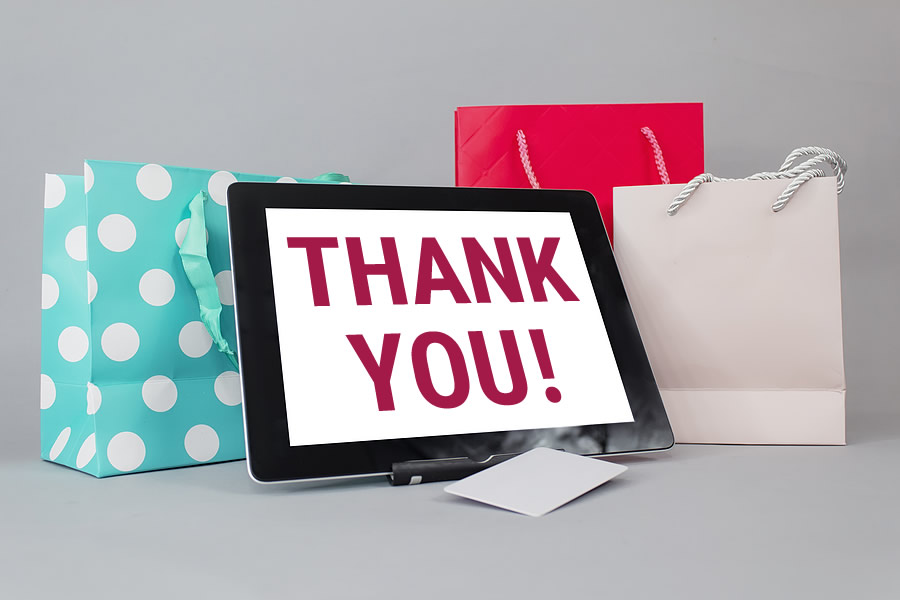
Recently I was leading a training on raising major gifts and one of the participants asked how she could steward donors virtually. It got me thinking about why stewardship is important and why you should think outside the box when following up with donors after they make a gift.
The Importance of Stewardship
Stewardship is the fourth and final phase of the fundraising cycle and takes place after a donor makes a gift. There are two critical components of stewardship:
- First, a donor needs to feel thanked.
- Second, a donor needs to feel they made a difference.
There’s no One-Size-Fits-All Stewardship Plan
You’ll want to tailor your thank you’s to your donors. If you think sending a form letter is sufficient, you are mistaken. A form letter doesn’t make your donor feel warm and fuzzy and doesn’t reassure them that they truly made a difference by giving to your organization.
Create an opportunity to ask each donor how they prefer to be thanked and pay attention to what they say. Ask for an example of a meaningful “thank you” they’ve received and what made it meaningful. Let them know you are trying to be more heartfelt when thanking donors and are looking for new ideas.
The most important part of stewardship is that it is authentic, genuine, and heartfelt. Whenever possible, it should be connected to your mission and make you stand out in a crowd.
6 Ways to Thank Donors Virtually and Uniquely
Let’s look at some ways to thank donors virtually and really stand out from the crowd.
1. Make a Video
Videos don’t have to be formal or professionally edited to be meaningful. You’re likely carrying a high-quality video camera around in your pocket right now (i.e., your phone). Have clients (when appropriate) and staff thank donors throughout the week and string them together. You can also take action shots of programs in progress.
2. Send an Email
Gone are the days of a thank-you note. A heartfelt email works just as well. The key to a good thank-you email is making sure that the donor knows you are speaking directly to them. If you copied and pasted someone else’s name into the greeting, the email shouldn’t make sense. The donor should know you are speaking directly to them.
3. Pick up the Phone
When was the last time you picked up the phone and called a donor to say thank you? Assume you will leave a message, but be prepared to speak with your donor if they do answer the phone. Say something personal — ask them about their family, work, or business. Fill them in on what’s going on with a specific program or project they are interested in. Invite them to volunteer or get involved in some meaningful way.
4. Post on Social
Take this one with a grain of salt; use it carefully and appropriately. Only share on social media if you have your donor’s express permission and if they are active and engaged on social themselves. Remember, for stewardship to be meaningful it must resonate with that particular donor. If you post about a donor who has no presence and isn’t active on social, it will not resonate or be genuine.
5. Send a Picture
Pictures are worth a thousand words. If you have a meaningful photo of your donor with clients or in action at your organization, or perhaps a drawing by clients, send it along to your donor in a nice frame and with a personalized thank-you note.
6. Deliver a Gift
While not completely virtual, a gift of gratitude can be delivered personally or by mail. It needn’t cost a lot. And, if it’s connected to the mission, all the better. For example, something made by your clients or staff. If you are a conservation or environmental organization, you might pick something that can be recycled, for example.
Personalizing Your Thank You’s
Although you may have heard some of these ideas before, what you do to personalize them and connect them to your mission is what will make them stand out and be remembered.
The more your thank you’s can stand out from the crowd and personally reference each individual donor, the better. The more specific and detailed your thank you’s are, the more genuine and authentic they will be.
What do you do to thank your donors? Tell me about it in the comments below.

I like sending a personalized video (15-30 seconds) to my donors, if I can’t connect with them on the phone – if appropriate I’ll add in a note from a program recipient or staff member from a set of prerecorded messages (I stitch them together using a program called Memento). I’ve also used cards designed by youth that my organization serves to send thank you’s for specific appeals like our back-to-school or holiday/new year appeal.
Hi Amy,
For your information i created some really wonderful plawue creations to award my donors for their generosity during our ambualnce campaign. The levels were:
$3500
$5000 – 25,000
A higher level
The highest for the person behind the campaign
We had a dedication and awards ceremony.
Because of that the second campaign skyrocketed because some honorees especially the bigger honorees helped, and gave more than they did during rhe forst campaign!!
I am still sending hand-written note cards to donors. These seem to be appreciated more than an email by many. I had more responses to thank you cards in the mail rather than emails. For long-term donors, I like to send an org pin so they feel attached to the work they support. I have not tried video thank you’s yet.